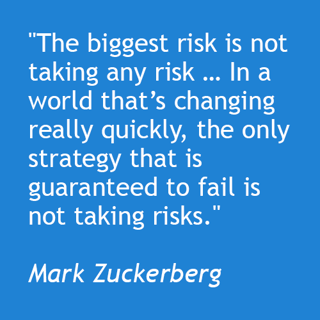Every change carries an element of risk. But standing still often carries more. In a fluid environment, not changing can be the biggest risk of all. Not changing in response to external events or internal requirements can cause you to lose relevancy to your stakeholders, impact efficiency and effectiveness, and ultimately threaten the survival of your organisation.
With systems, people are aware of the risk of change – Novopay’s shadow continues to linger over IT projects here in New Zealand. Yet they are often reluctant to address the ongoing and increasing business risk of not changing their system to meet their current and future needs.
Risks such as:
- Systems that depend on handwritten code, customisations, or workarounds which are known about by only a few – or less – people, putting the business at risk should they leave or retire, and holding the organisation hostage to their knowledge.
- Systems that are “too scary” to change become increasingly obsolete as organisational requirements change around them. No-one in the business wants to touch them in fear of full system failure, and so, no-one does.
The user experience of systems decays as they become older, reducing employee engagement, rendering the system less effective.
Valuable data that could be turned into information to improve decision making (and in turn improve the allocation of resources) is not utilised as it becomes too hard to change the reporting. Therefore, the allocation of resources and business efficiency suffer. Delaying change can result in misunderstandings, ineffective reporting, and a business performing well below par, among other problems.
As Mark Zuckerberg, CEO of Facebook, stated: “The biggest risk is not taking any risk.” ..the solution is not to avoid change, but to manage it well.An effective Change Management approach will help businesses implement strategies to ease the process of change throughout every area in the company.
Do your research. Explore options and choose the best system for your business. A system that has been thoroughly considered, along with a robust Change Management approach, is a recipe for success. Consider the likely lifetime and value of the system. Are you choosing a product or a long-term partnership?
Be clear about your end goal, work backwards from there and stay focused on achieving the benefits you originally envisaged.
Communicate with your people. Participation and an uncomplicated approach to change will be derived from personal contact as opposed to rumours or hearing about the change through the media. Explain precisely why the business is changing to help everyone understand the motives behind the decision.
Prepare. People within the organisation may behave differently than initially anticipated. Prepare for unexpected reactions and external environmental shifts by continually reassessing the situation and providing leeway where necessary.
Celebrate the short-term successes. Organisational change can be a long process. Breaking it down into short term goals will keep the motivation-to-change high.
Commit to the change. Apply the skills, and set aside the resources needed, to move through the entire plan. Lack of motivation can result in the careless allocation of skills and resources, and therefore a poorly executed plan.
Continue to change. The change process doesn’t simply stop once you’ve moved through the Change Management plan. Continually assess each area of your business to determine where other efforts can be implemented to improve the business even further.Organisations must harness the ability to move with their growth by implementing strategies and systems that are ‘change-ready’. By investing in a system that allows the business to grow in motion, it will have the opportunity to flourish, and the benefits will greatly outweigh the risks of change.





